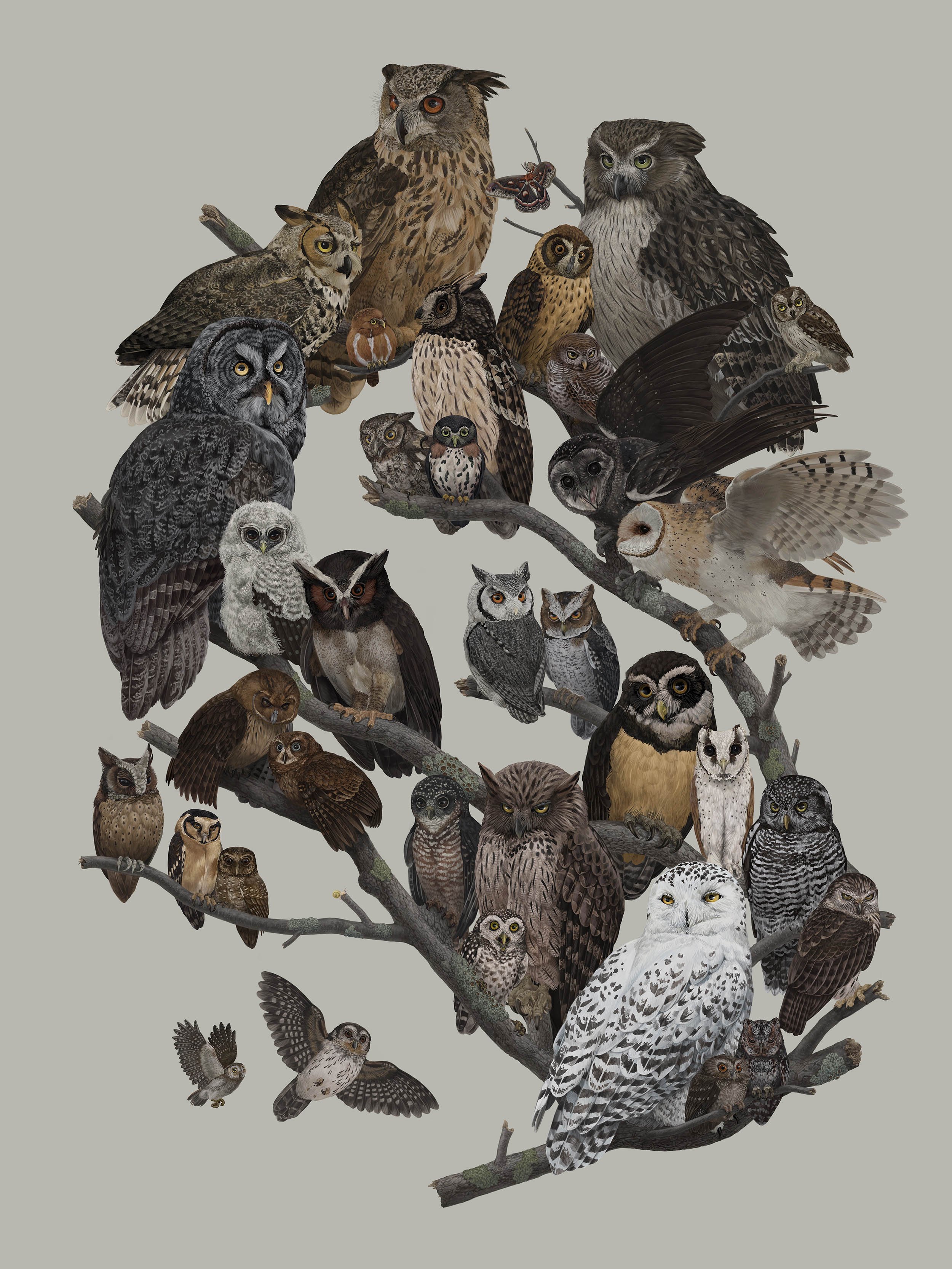Biodiversity Print Series
I am awed by the infinite variations life takes on our small planet. The prints in this growing series explore that biodiversity. After working exclusively in graphite for five years, it is very exciting to celebrate the vivid colors of the natural world. I look forward to releasing additions to this series in 2022.
-
My biodiversity drawings were created in Procreate, on a 4th generation iPad Pro with a 12.9 inch screen and Apple Pencil.
-
Owls prints were sold through my webstore in 2021, and are completely sold out. APs may be available in the future. Please join my mailing list at the bottom of this page, and follow me on social media for release details. I ask that folks do not email me requesting APs. I am not maintaining an AP waitlist.
OWLS OF THE WORLD
About
18 x 24” (46 x 61 cm)
Owls prints are completely sold out.
The haunting call of an unseen owl has long been the stuff of legends. Found on every continent except Antarctica, the world's 200 owl species1 have adapted to thrive not only in forest habitats, but also in deserts,2 on tropical islands,3 and in the frigid Arctic tundra.4 These predatory, primarily nocturnal birds5 vary widely in size. The world's largest owl, the Blakiston’s Fish-Owl, has a wingspan that is just shy of six feet (two meters). (Researchers explain that it is so large that it is "...commonly mistaken for a person...or something out of a dream,"6) The world's smallest owl, the minute Elf Owl, barely weighs 1.6 ounces (45 grams).7 Of the 244 species of owl recognized by the IUCN Red List, four are listed as Critically Endangered, thirteen as Endangered, twenty-eight as Vulnerable, and twenty-six as Near Threatened. Threats to global owl biodiversity are wide ranging, but according to IUCN Red List data* the primary drivers of owl species decline are logging and wood harvesting, and agricultural development. Residential and commercial development, roads and railroads, and the climate crisis also put owls at risk.
*Based on a February 2022 search in the IUCN Red List database for the Order Strigiformes.
Owls Species Key
1 Eurasian Eagle Bubo bubo
2 Blakiston’s Fish Ketupa blakistoni
3 Fearful Nesasio solomonensis
4 Jungle Owlet Glaucidium radiatum
5 Arabian Scops Otus pamelae
6 Greater Sooty Tyto tenebricosa
7 Barn Tyto alba
8 Southern White-faced Ptilopsis granti
9 Visayan Scops Otus nigrorum
10 Spectacled Pulsatrix perspicillata
11 Oriental Bay Phodilus badius
12 Northern Hawk Surnia ulula
13 Papaun Hawk-Owl Uroglaux dimorpha
14 Flammulated Psiloscops flammeollus
15 Long Whiskered Owlet
Xenoglaux loweryi
16 Snowy Bubo scandiacus
17 Spotted Owlet Athene brama
18 Brown Fish Bubo zeylonensis
19 Sumba Boobook Ninox rudolfi
20 Elf Micrathene whitneyi
21 Bare-Legged Owl Margarobyas lawrencii
22 Palau Pyrroglaux podarginus
23 Buff Fronted Aegolius harrisii
24 White-Fronted Scops Otus sagittatus
25 Moheli Scops Otus moheliensis
26 Jamaican Pseudoscops grammicus
27 Crested Lophostrix cristata
28 Northern Spotted
Strix occidentalis caurina
29 Great Grey Strix nebulosa
30 Long-Tufted Screech-Owl
Megascops sanctaecatarinae
31 Red Chested Owlet
Glaucidium tephronotum
32 Madagascar Long-eared
Asio madagascariensis
33 Costa Rican Pygmy-Owl
Glaucidium costaricanum
34 Great Horned Bubo virginianus
Moth: Cecropia Moth Hyalophora cecropia

